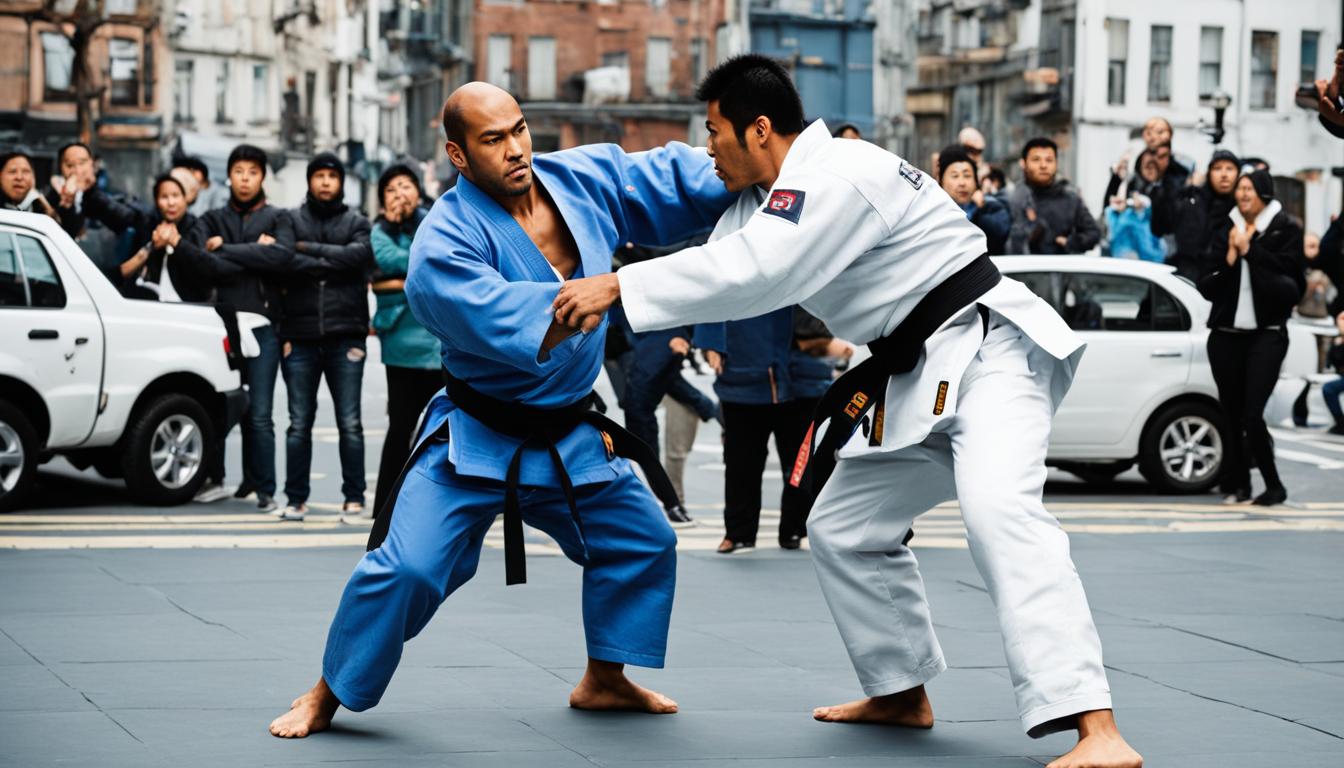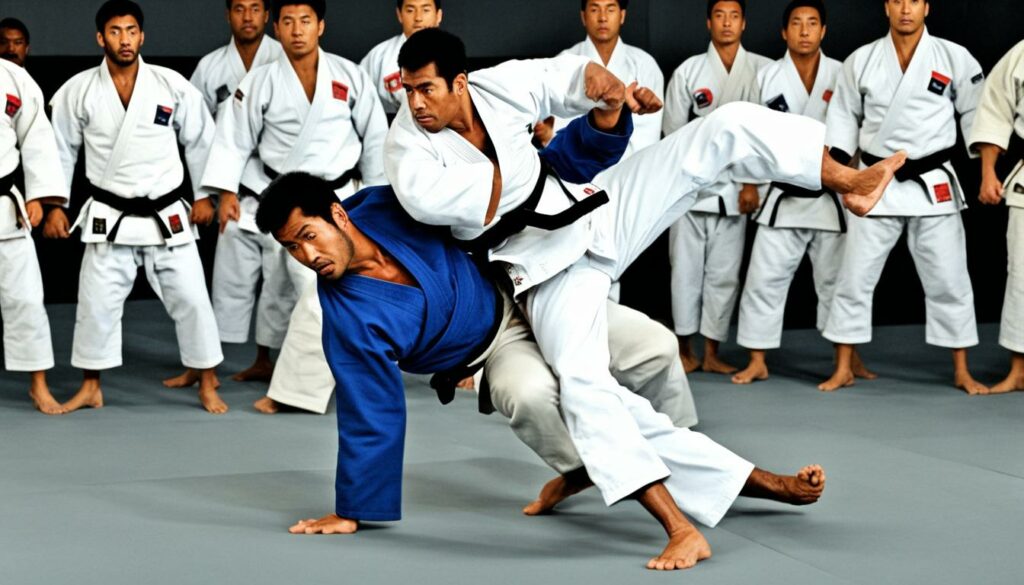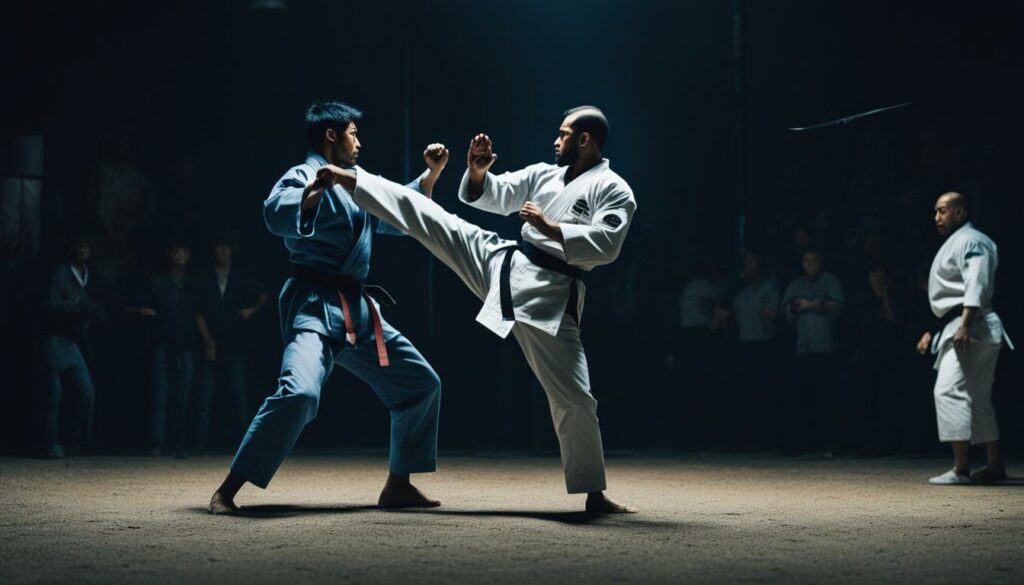As a self-defense enthusiast, I have often wondered about the effectiveness of judo in real street fights. Can those grappling and throwing techniques truly hold their own when faced with the chaotic nature of a self-defense situation? In this article, we will explore the practicality of using judo in street fights, examining its effectiveness, advantages, and limitations.
Many martial arts practitioners consider judo to be more than just a sport. It is a comprehensive system of combat self-defense. Rooted in the philosophies of maximum efficiency and mutual welfare, judo combines powerful throws, precise joint locks, and effective groundwork to give practitioners a well-rounded set of skills to handle various situations.
The beauty of judo lies in its adaptability. Traditionally, judo techniques are practiced with a gi, a traditional uniform. However, many experienced judo practitioners have successfully adapted these techniques to work in real-world scenarios without the gi, making it a practical art for self-defense purposes.
Close-quarters combat is where judo shines. With its focus on throws, takedowns, and ground fighting, judo equips individuals with the skills needed to handle confrontations in tight spaces, such as alleyways or crowded areas. These techniques can give judo practitioners a significant advantage in street fights.
In the next sections, we will delve deeper into the effectiveness of judo in real street fights. We will examine real-life examples and experiences of individuals who have relied on judo techniques in self-defense situations. Additionally, we will assess the practicality of judo against common dynamics encountered in street fights, such as groundwork, strikes, and weapon attacks.
Key Takeaways:
- Judo is a comprehensive system of combat self-defense, combining throws, joint locks, and groundwork techniques.
- Judo techniques can be adapted for self-defense without the traditional gi.
- Judo’s focus on close-quarters combat makes it effective in street fights.
- Real-life examples and experiences highlight the practicality of judo in self-defense situations.
- Assessing judo against common street fight dynamics reveals its strengths and limitations.
Unveiling Judo as Combat Self-Defense
The Philosophy and Techniques of Judo
Judo is more than just a sport; it is a comprehensive system of combat self-defense. Rooted in the principles of discipline, respect, and maximum efficient use of energy, judo offers a unique approach to self-defense. By understanding the philosophy behind judo, practitioners gain valuable insights into its practical applications.
Central to judo are its techniques, which focus on leveraging an opponent’s strength and momentum against them. Through precise throws, joint locks, and immobilization techniques, judo practitioners can neutralize threats effectively. The emphasis on body positioning, timing, and leverage allows even individuals of smaller stature to overcome larger and stronger opponents.
Adapting Judo Skills Without the Gi
Traditionally, judo is practiced in a gi, a traditional uniform worn during training. However, it is crucial to adapt judo skills for real self-defense scenarios where an attacker may not be wearing clothing suitable for grappling. By training without the gi, practitioners learn to apply their techniques effectively in a variety of situations, enhancing their ability to defend themselves in real-world encounters.
Judo’s Approach to Close-Quarters Combat
In many street fight situations, encounters occur in close quarters, where grappling techniques become essential. Judo’s focus on close combat techniques, such as clinches, takedowns, and groundwork, equips practitioners with the necessary skills to control and neutralize opponents in confined spaces.
Judo’s close-quarters combat techniques emphasize the ability to off-balance and subdue adversaries through throws and joint locks, allowing for quick and decisive resolutions in self-defense situations. The combination of strength, agility, and technical mastery makes judo an effective martial art for close-range combat.
Can Judo Be Used in a Real Street Fight?
One of the main questions surrounding judo is whether it can truly be used in a real street fight. In order to understand its practicality, it is important to examine real-life examples and experiences of individuals who have utilized judo techniques in self-defense situations. By analyzing these accounts, we can gain insight into the effectiveness of judo in street fights.
Assessing Judo’s Practicality Against Common Street Fight Dynamics
To further determine the effectiveness of judo in street fights, it is important to assess its practicality against common dynamics that occur in real-world self-defense scenarios.
Understanding Groundwork and Its Importance
Groundwork is a fundamental aspect of judo that plays a crucial role in street fights. By utilizing techniques such as pins, chokes, and joint locks on the ground, judo practitioners can effectively control and neutralize attackers, even if they are larger or stronger.
Groundwork in judo provides a significant advantage in street fights as it allows practitioners to immobilize and restrain opponents, reducing the risk of further harm to themselves or others. By understanding the principles of leverage, balance, and body mechanics, judo practitioners can exploit an opponent’s vulnerabilities and maintain control over the fight.
Through consistent training and practice, judo practitioners develop the ability to transition seamlessly between standing techniques and groundwork, enabling them to respond effectively in unpredictable and dynamic street fight scenarios.
The Reality of Strikes and Weapon Attacks in Fights
In street fights, it is essential to be prepared for strikes and weapon attacks. While judo primarily focuses on grappling and throwing techniques, it also incorporates elements of striking and defense against strikes.
Judo training equips practitioners with the ability to quickly close the distance and negate an attacker’s striking advantage. By utilizing evasive footwork, timing, and precise movement, judo practitioners can effectively nullify strikes and create opportunities for counterattacks.
Moreover, judo provides techniques and strategies for defending against weapon attacks. Through training in disarming techniques and developing an understanding of weapon dynamics, judo practitioners gain valuable skills to protect themselves and mitigate potential harm in street fights.
Physical and Psychological Advantages of Judo Training
In addition to its practical applications in street fights, judo training offers various physical and psychological advantages for self-defense.
Physically, practicing judo enhances overall fitness, strength, and agility. The rigorous training routines and full-body workouts build muscular endurance and cardiovascular conditioning, ensuring that judo practitioners are physically prepared for the demands of self-defense situations.
Psychologically, judo training instills confidence, discipline, and mental resilience. The constant practice of techniques, the mental focus required during matches, and the ability to adapt to different opponents and situations develop a strong mindset and the ability to think strategically in confrontational situations.
| Advantages of Judo Training in Street Fights |
|---|
| Enhanced control and restraint of opponents on the ground |
| Ability to neutralize larger or stronger attackers |
| Effective defense against strikes and weapon attacks |
| Physical conditioning and improved overall fitness |
| Improved mental fortitude, confidence, and strategic thinking |
In conclusion, judo’s practicality in street fights becomes evident when considering its emphasis on groundwork, defense against strikes and weapons, as well as the physical and psychological advantages gained through training.
Conclusion
Embracing the Strengths and Recognizing the Weaknesses
In conclusion, judo offers both strengths and weaknesses as a martial art for street fights. It is crucial to understand and embrace these aspects in order to make an informed decision about its effectiveness in self-defense situations. Judo’s strengths lie in its grappling and throwing techniques, which can provide an advantage in close-quarters combat. The emphasis on groundwork in judo allows practitioners to control opponents and neutralize threats effectively.
However, judo does have weaknesses that should be acknowledged. While judo is highly effective when it comes to one-on-one confrontations, it may be less practical in situations involving multiple assailants or when weapons are involved. Additionally, the reliance on close-range techniques may limit its applicability in scenarios where maintaining distance is crucial.
Judo in the Real World vs. the Dojo: A Balanced Viewpoint
When considering the effectiveness of judo in real-world situations, it is important to recognize the difference between training in a controlled dojo environment and applying judo techniques in live encounters. In the dojo, practitioners can refine their skills, develop muscle memory, and gain confidence in their abilities.
However, judo techniques in the real world may face challenges such as the unpredictability of opponents, the presence of external factors, and the need for quick decision-making under pressure. It is essential to understand that real-life scenarios often demand adaptation and improvisation, which may deviate from the scripted nature of dojo training.
In conclusion, while judo can be a valuable martial art for self-defense, its application should be evaluated with a realistic understanding of its strengths and weaknesses. Recognizing the limitations of judo in certain situations can help individuals make informed decisions about their personal safety. By combining the strengths of judo with a broader understanding of self-defense, individuals can improve their overall preparedness and safety in real-world scenarios.



